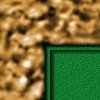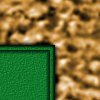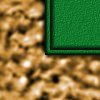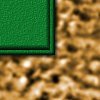WHAT ARE CAECILCIANS ? Caecilians are a legless, tailless tropical amphibian. And since I had never heard of them until I started looking up amphibians, I decided to include a page about them. They make up the order Gymnophiona, one of the three orders from the class Amphibia.
APPEARANCE : Though eel-like or earthworm-like in appearance, they are neither of these. They have vertebrate characteristics such as jaws and teeth. Their eyes are nearly functionless and even nonexistant on some. They have a groove on either side of the head which contains a retractable sensory tentacle. Most are between 5 to 14 inches long and 1/4 to 1 inches in diameter, but I read that some can get to 4 1/2 feet long!
WHAT THEY EAT : Caecilians are carnivorous. They eat things like insect larvae, termites, and earthworms that are found in the swampy places where they live.
WHERE THEY LIVE : Caecilians are found on four continents in their terrestrial forms, and at least one fully aquatic sub-family (Typhlonectinae) lives in South America. Being amphibians, even land-bound caecilians require a moist climate in which to live. So they are found in swampy places in most tropical parts of the world, but are seldom seen because of their burrowing behavior. Many of the land-bound caecilians live their entire lives burrowed underground. There are no known species in Europe, North America, Australia, Madagascar, or Antarctica. (Since I am in North America, I can't get any pictures. Sorry!)
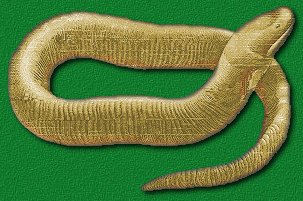 GENERAL CHARACTERISTICS : Caecilians live 5 to 20 years. Some caecilians are oviparous (egg-layers), some viviparous (livebearers), and a few are ovoviviparous (meaning that the eggs hatch inside the mother and the young live in her until maturity). The skin of the caecilian is folded, giving it the same ringed look as an earthworm. Under the epidermis of some species is a layer of scales. This is considered a primitive characteristic because the ancestors of modern amphibians had them, while most modern amphibians no longer have them. Their eyes are covered with skin and/or bones of the skull, making them virtually blind. In front of the eye is a small tentacle that they can put out and gather information which they send to their Jacobson's organ that lies behind their nose. Caecilians come in some strikingly colored varieties, including orange and gray with yellow stripes. At least one type of caecilian (Typhlonectes) is kept as an aquarium pet. Typhlonectes is a fully aquatic caecilian found only in South America. They are called "rubber eels" or "black eels" in aquarium shops, but they are not eels! They go up for air several times a day, and like to burrow into the gravel and live under the substrate.
GENERAL CHARACTERISTICS : Caecilians live 5 to 20 years. Some caecilians are oviparous (egg-layers), some viviparous (livebearers), and a few are ovoviviparous (meaning that the eggs hatch inside the mother and the young live in her until maturity). The skin of the caecilian is folded, giving it the same ringed look as an earthworm. Under the epidermis of some species is a layer of scales. This is considered a primitive characteristic because the ancestors of modern amphibians had them, while most modern amphibians no longer have them. Their eyes are covered with skin and/or bones of the skull, making them virtually blind. In front of the eye is a small tentacle that they can put out and gather information which they send to their Jacobson's organ that lies behind their nose. Caecilians come in some strikingly colored varieties, including orange and gray with yellow stripes. At least one type of caecilian (Typhlonectes) is kept as an aquarium pet. Typhlonectes is a fully aquatic caecilian found only in South America. They are called "rubber eels" or "black eels" in aquarium shops, but they are not eels! They go up for air several times a day, and like to burrow into the gravel and live under the substrate.
CLASSIFICATION : There are about 50 species of caecilians, divided into 16 genera. They are classified in the phylum - Chordata, subphylum - Vertebrata, class - Amphibia, order - Gymnophiona, family - Caecilidae.
